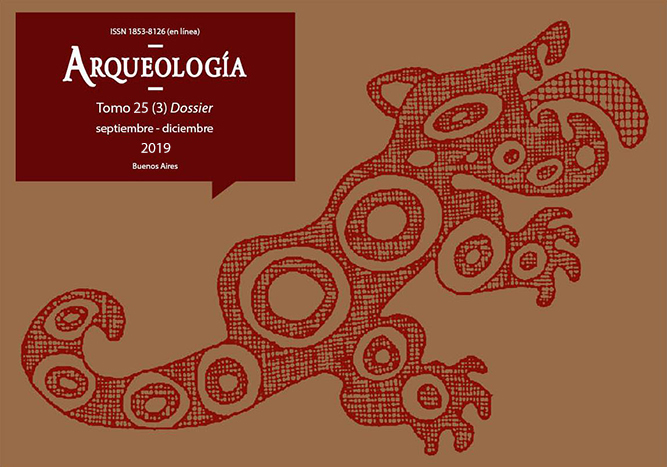Avances en la zooarqueología chaqueña. El sitio La Ilusión I (Chaco, Argentina)
Resumen
Los estudios zooarqueológicos en la región chaqueña son fundamentales para esclarecer diversos aspectos de las sociedades prehispánicas que allí habitaron. Se presentan los resultados del análisis de los restos faunísticos recuperados en el sitio arqueológico La Ilusión I (SChaSmar 3.1), que se encuentra emplazado sobre una elevación moderada en vinculación con un espejo de agua en la región de Esteros, Cañadas y Selvas de Ribera del Chaco Húmedo. El componente de ocupación se identifica como un estrato de tierras conchíferas en el cual se encuentran los depósitos culturales con una antigüedad de 630 ± 40 14C años AP (LP-2440) y representa, por el momento, el límite septentrional de la influencia de la Entidad Arqueológica Goya-Malabrigo. Se realizó la determinación anatómica y taxonómica de la muestra, la cuantificación y el análisis de las modificaciones óseas con el fin de distinguir los procesos y agentes que actuaron sobre los restos. Como resultado principal se puede mencionar el uso de fauna de bajo retorno energético como los moluscos, los peces y en menor medida los pequeños roedores, diferenciándose de la mayoría de los sitios de la región analizados previamente por la escasa representación del coipo.Descargas
La descarga de datos todavía no está disponible.
Publicado
2019-10-01
Cómo citar
del Papa, L. M., & Lamenza, G. (2019). Avances en la zooarqueología chaqueña. El sitio La Ilusión I (Chaco, Argentina). Arqueología, 25(3), 143-166. https://doi.org/10.34096/arqueologia.t25.n3.7327
Sección
Artículos
Derechos de autor 2019 Arqueología

Esta obra está bajo licencia internacional Creative Commons Reconocimiento-NoComercial-CompartirIgual 4.0.
Los autores/as que publiquen en esta revista aceptan las siguientes condiciones:
- Los autores/as conservan los derechos de autor y ceden a la revista el derecho de la primera publicación, con el trabajo registrado mediante Licencia Creative Commons 4.0 Internacional (CC-BY-NC-SA), que permite a terceros utilizar lo publicado siempre que mencionen la autoría del trabajo y a la primera publicación en esta revista.
- Los autores/as pueden realizar otros acuerdos contractuales independientes y adicionales para la distribución no exclusiva de la versión del artículo publicado en esta revista (p.e. incluirlo en un repositorio institucional o publicarlo en un libro) siempre que indiquen claramente que el trabajo se publicó por primera vez en esta revista.
- Se permite y recomienda a los autores/as a publicar su trabajo en Internet (p.e. en sus sitios web personales o en depósitos institucionales), tanto antes como después de su publicación en esta revista, siempre y cuando proporcionen información bibliográfica que acredite, si procede, su publicación en ella. De esta manera, pueden favorecerse intercambios productivos y a una mayor y más rápida difusión del trabajo publicado (vea The Effect of Open Access).



.png)

(1)13.png)






1.jpg)
1.png)
1.jpg)


13.png)
1.png)


(1)1.png)









